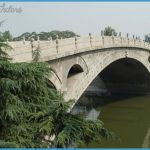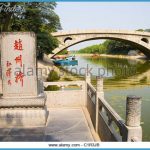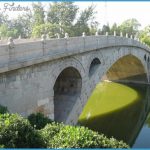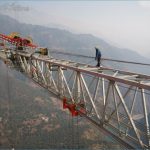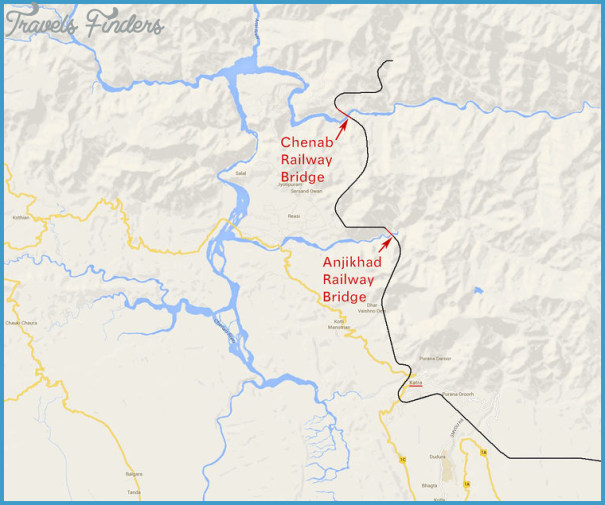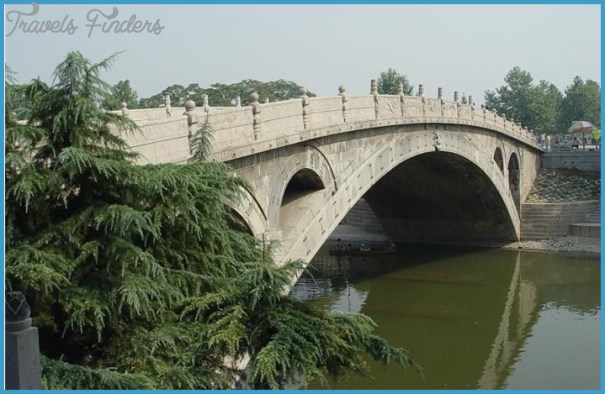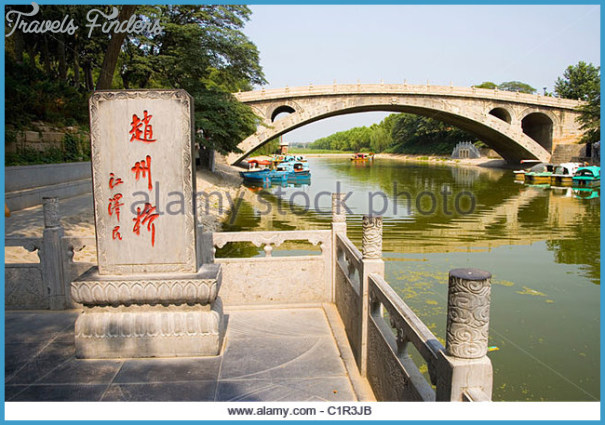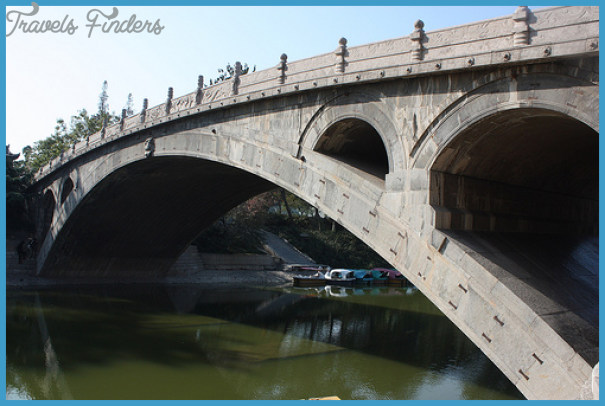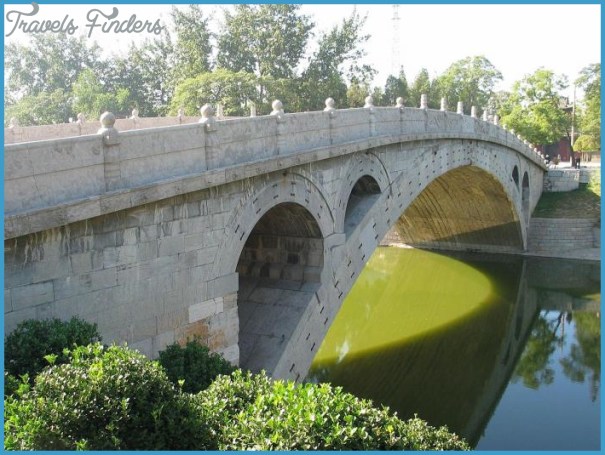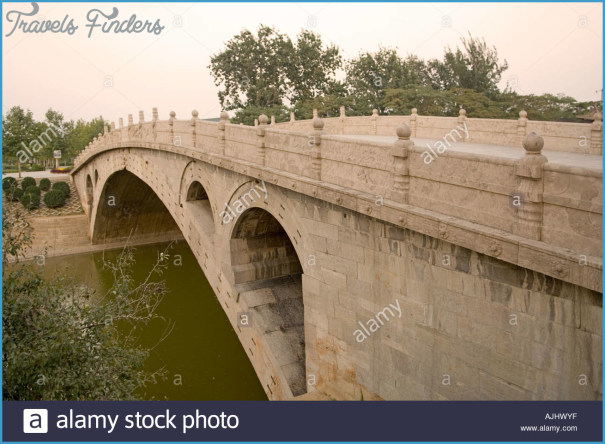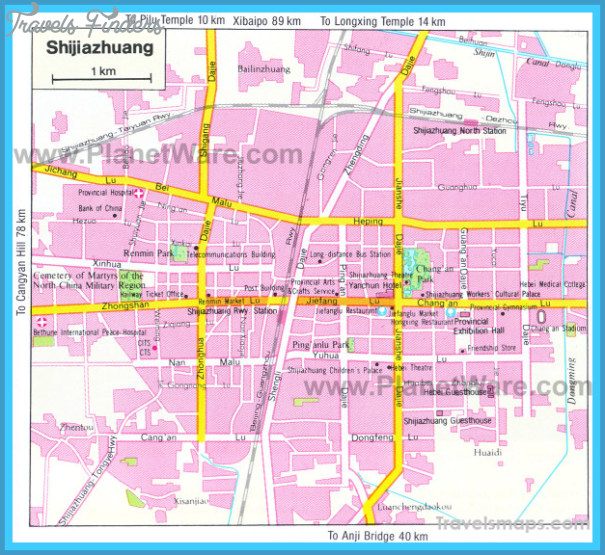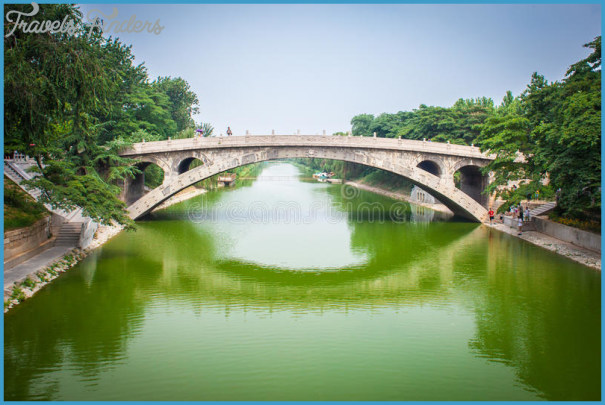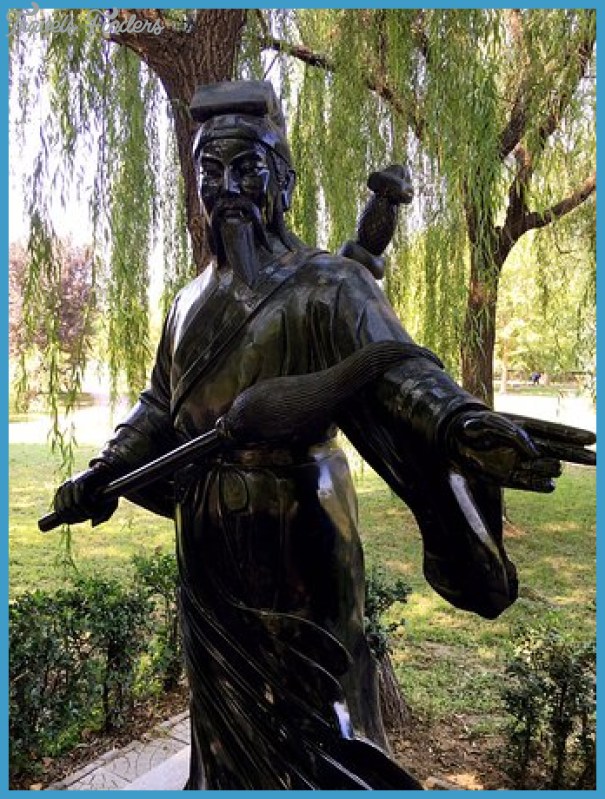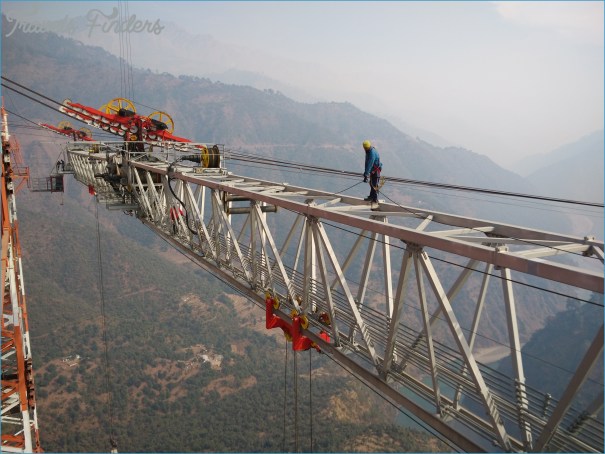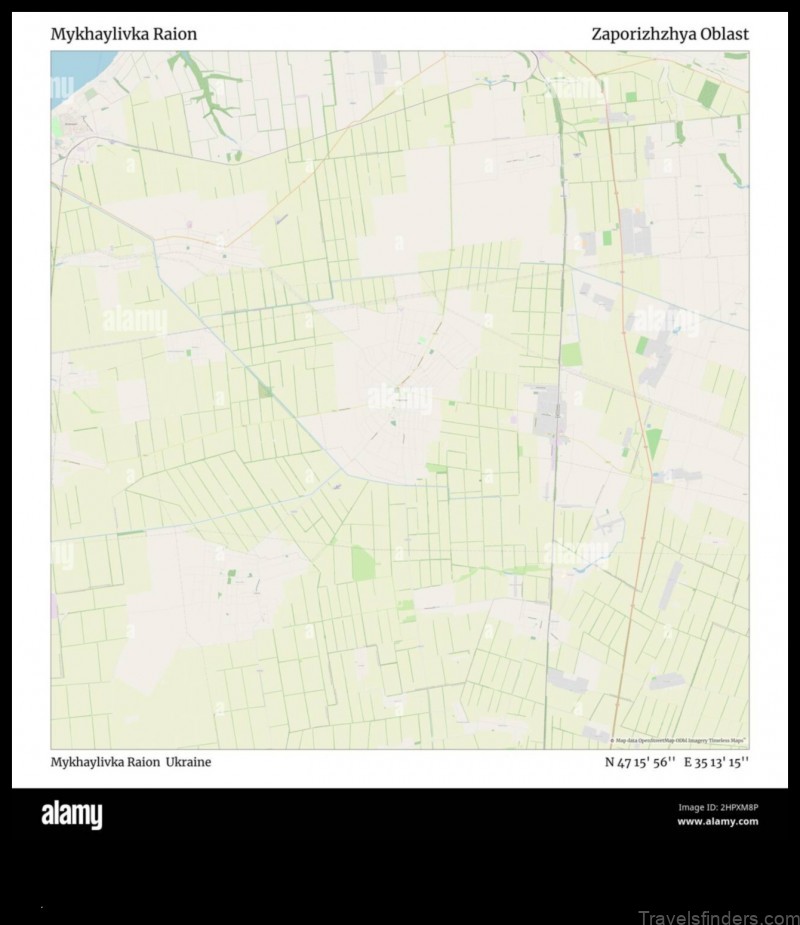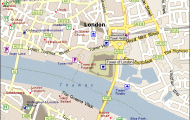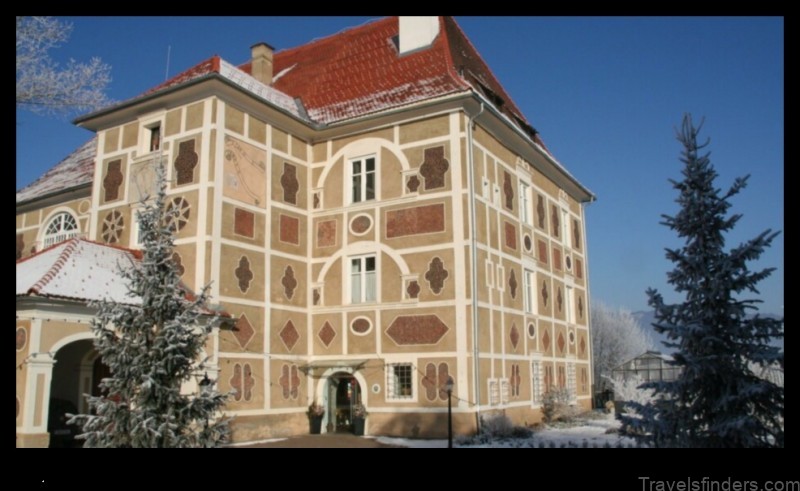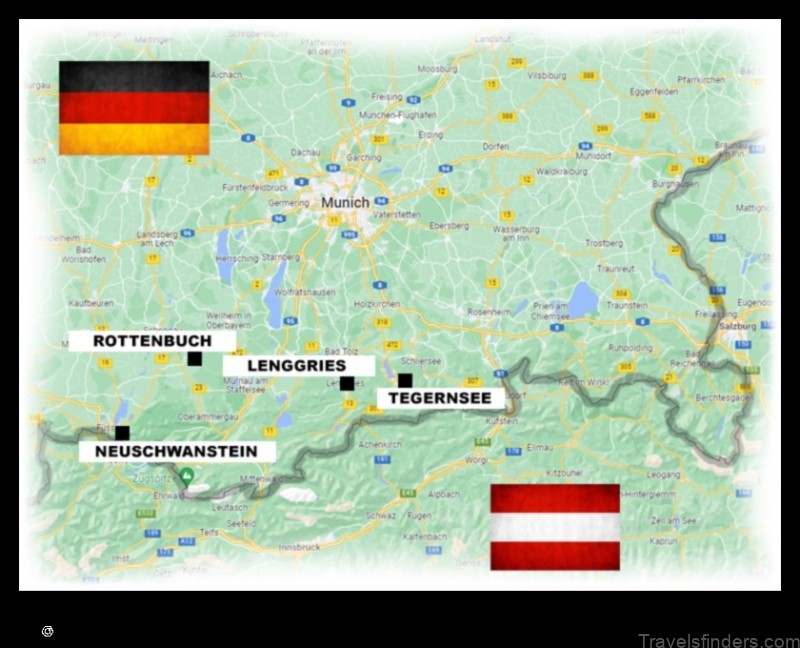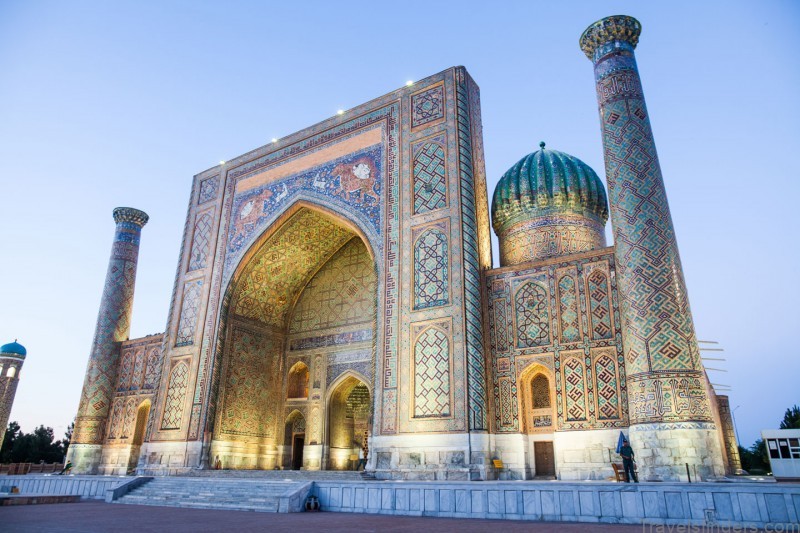ANJI BRIDGE MAP
Four hours southwest of Beijing, where the Xiao River flows over the North China Plain, stands the remarkable Anji Bridge. Designed by the master stonemason Li Chun in the late sixth century, the Anji marks the first time a segmental stone arch design was used in bridge construction. Predating anything comparable in Europe by eight hundred years, it also pioneered open-spandrel construction, which lightened its mass, an innovation not seen in the West until the nineteenth century.
Also called the Zhaozhou or Great Stone Bridge, the Anji (literally “Safe Passage”) was built during the powerful but short-lived Sui Dynasty (A.D. 581618). During the Sui period, a number of monumental engineering feats were initiated, including the Grand Canal and the reconstruction of the Great Wall, as well as numerous smaller projects that would facilitate the movement of the military and commercial goods. Opportunities emerged in China for exploring and ultimately devising innovative methods of prevailing over old problems with art and grace.
ANJI BRIDGE MAP Photo Gallery
In his authoritative book Chinese Bridges, Ronald G. Knapp describes the conditions that determined the Anji’s design and construction. The wide, swiftly moving Xiao River prohibited the use of multiple stone piers. A single semicircular arch, which would have reached a height of 66 feet (20 meters), was also ruled out. A flat beam bridge would have accommodated the steady stream of pedestrians, animals, and carts crossing the river but would not have provided enough clearance for boats. Li Chun solved this conundrum by designing a longer, flatter arch that used a fraction, or segment, of a circle rather than a full semicircle to achieve both sufficient height and a gentle incline. To reduce the weight and pressure exerted by the arch, the spandrelsthe triangular areas between the arch and the roadwaywere pierced. His solution was revolutionary.
Twenty-eight parallel arches, formed from curved wedges of limestone locked together with cast iron, give the bridge great flexibility. The stones, quarried nineteen miles away, were moved to the construction site only in winter, when they could be dragged over ice; the bridge took at least a decade to complete. It is 167 feet (51 meters) long, with a central span of 122.6 feet (37.4 meters).
According to an eighth-century Tang chronicle, the bridge’s sleek silhouette was originally enhanced by ornamental bas-relief carvings of interlocked dragons and beasts. They had disappeared by 1934, when architect Liang Sicheng did the first in-depth study of the bridge, but some were discovered in a later excavation and are now displayed nearby.
A grimacing, open-mouthed taotie, the mythical beast depicted on the bridge’s central balustrade, was placed there to protect it from floods.
The Anji Bridge, still in use after 1,400 years, ushered in a new era of bridge building in China. In the centuries that followed, many similar spans would be built, although none would earn the accolades accorded the elegant Anji by a Ming Dynasty poet who compared it to a “new moon rising above the clouds, a long rainbow drinking from a mountain stream.”
The bridge’s superb craftsmanship is evident in a detail of an open spandrel that shows the iron- and stonework used to stabilize the voussoirs.


